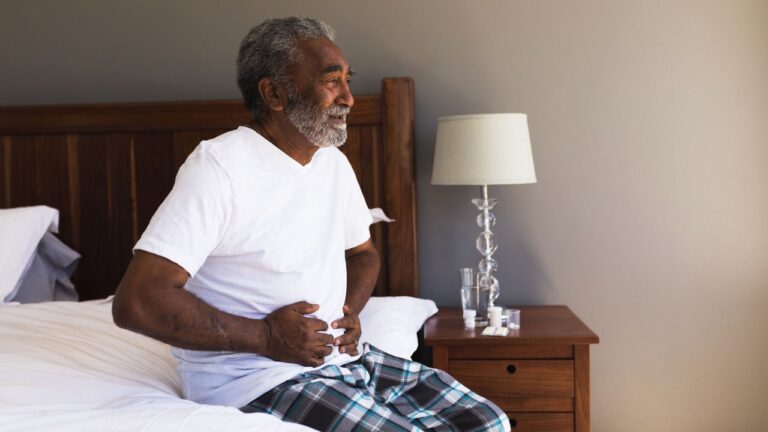For years, David Adams was one of those people, too. An affable man in his seventies, he’s spent almost an entire decade in and out of the hospital with pneumonia, severe inflammation, and pain so bad “it almost feels like your body is trying to push out through your pores.” He might never have discovered what was happening to him had it not been for his tenacious primary care physician, Risa Huber, who sent him to rheumatologists, hematologists, and, eventually, the NIH, where he was diagnosed with Vexas.
Treatment-wise, that diagnosis hasn’t meant much to Adams so far. As of now, the only cure for Vexas is a bone marrow transplant, a procedure that carries substantial risks. Adams was supposed to get a transplant last year, but doctors discovered that his right coronary artery was almost entirely blocked. He received a stent, and he hopes to get a transplant sometime soon, but for now he remains dependent on the steroids he has had to use since he got sick.
And yet, knowing he has Vexas has changed his life. “I went for a long time feeling very alone,” he says. “That was probably the worst emotional part.” Despite an extremely supportive wife and medical team, Adams felt it was impossible for anyone around him to truly understand his fatigue and pain—especially without a confirmed diagnosis to explain it. Vexas offered him proof that his suffering was real.
One of his doctors at the NIH, Marcela Ferrada, understands precisely how Adams felt. She both lives with and studies relapsing polychondritis, an inflammatory disease that primarily affects cartilage in places like the nose and ears. Like many such diseases, relapsing polychondritis can only be diagnosed on the basis of symptoms—there’s no laboratory test. That lack of clarity can be tricky for patients. “If someone’s not telling you, ‘You have this,’ you’re always going to be questioning what is happening to you,” Ferrada says.
But now, for some patients, relapsing polychondritis does have a straightforward cause: Vexas. Ferrada fondly remembers calls she has made to patients to deliver the news that they have a UBA1 mutation—sometimes, she says, they are so excited to have a genetic diagnosis that they scream into the phone.
Ferrada’s hope is that, as her research continues, more and more patients will get to experience that same relief. She thinks the odds are good that other people with relapsing polychondritis—herself, perhaps, included—carry somatic mutations that are yet to be discovered. After all, she and her colleagues have already discovered a couple of new Vexas mutations at different spots in the UBA1 gene. And, she notes, many inflammatory diseases tend to appear late in life, and somatic mutations accrue as people age.
Grayson agrees that there are many other somatic mutation diseases waiting to be discovered, though he is skeptical that any new disease they find will be quite as widespread as Vexas. Then again, he admits, he never expected Vexas would affect so many people. Until more disease-causing mutations are discovered, it’s impossible to estimate how many people might be affected.
The good news is that the task of uncovering genetic diseases is only getting easier as gene sequencing becomes ever cheaper and more efficient. And the discovery of Vexas is a signal to the scientific community that searching for common genetic mutations among people with a wide variety of different symptoms is a fruitful strategy. “We found one, and we’ll keep working hard to find the other ones,” Ferrada says. “It’s only going to be a matter of time.”

